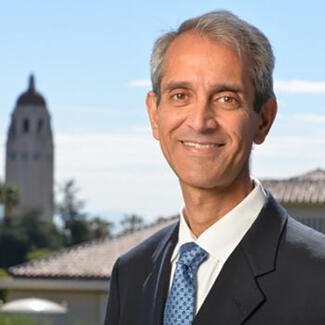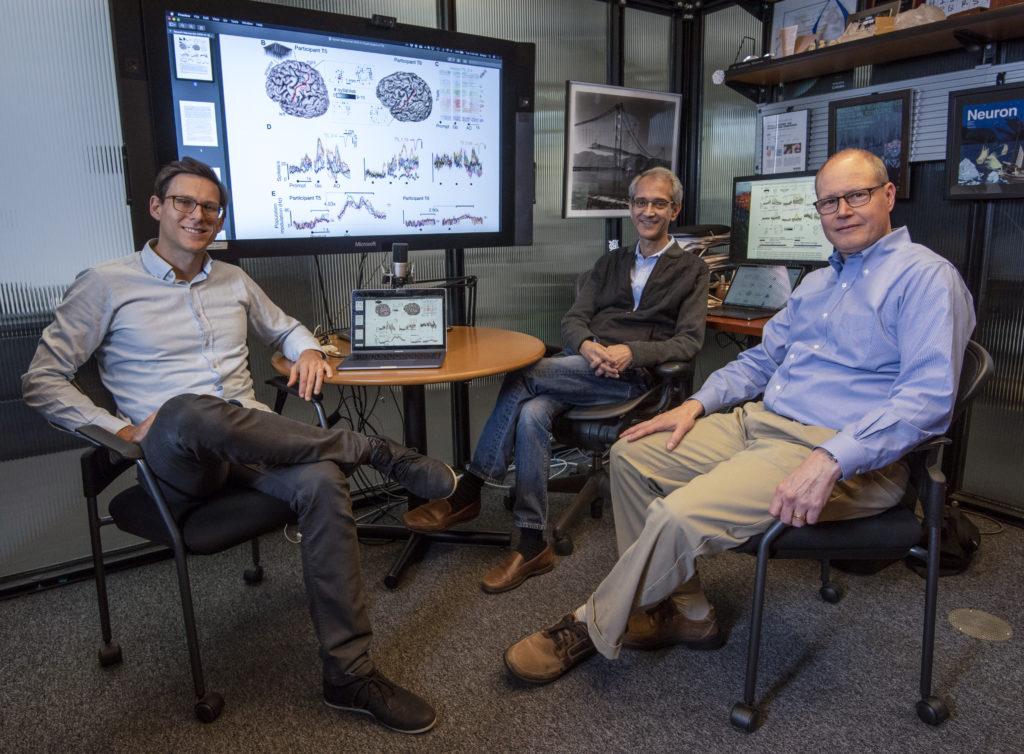
Krishna Shenoy and team may provide a voice to those who cannot speak
The team's research found that the part of the motor cortex that controls hand movement also appears to influence the muscles of the jaw, lips and tongue.
Professor Krishna Shenoy and neurosurgeon Jaime Henderson, MD lead a team of researchers that implanted multi-electrode arrays in the brains of study participants who suffered from severe limb weakness. In a recently published study, they found that "two neural population dynamics features previously reported for arm movements were also present during speaking: a component that was mostly invariant across initiating different words, followed by rotatory dynamics during speaking. This suggests that common neural dynamical motifs may underlie movement of arm and speech articulators." Read study
The scientists were able to design software that could differentiate among different syllables uttered by two of the implanted participants who retained the power of speech.
By analyzing neural activity across nearly 200 electrodes, the scientists found they could identify which of several syllables a participant was saying – with more than 80% accuracy in the case of one participant.
The implication here is that someday it may be possible to figure out what people who, for one or another reason, can't speak are trying to say – and get a device to say it for them.
"There aren't a lot of opportunities to make measurements from inside someone's brain while they talk," said postdoctoral research fellow, Sergey Stavisky. If these two people hadn't just happened to have multi-electrode arrays implanted in the part of the brain responsible for hand-movement control, that area's connection to speech might never have surfaced.

Stavisky, Shenoy and Henderson's work could one day help scientists build medical devices that help people who cannot speak. Photo by Peter Barreras/Howard Hughes Medical Institute.
Excerpted from Stanford Medicine's SCOPE Blog, "Why we talk with our hands — and how that may help give speech to the speechless" by Bruce Goldman.